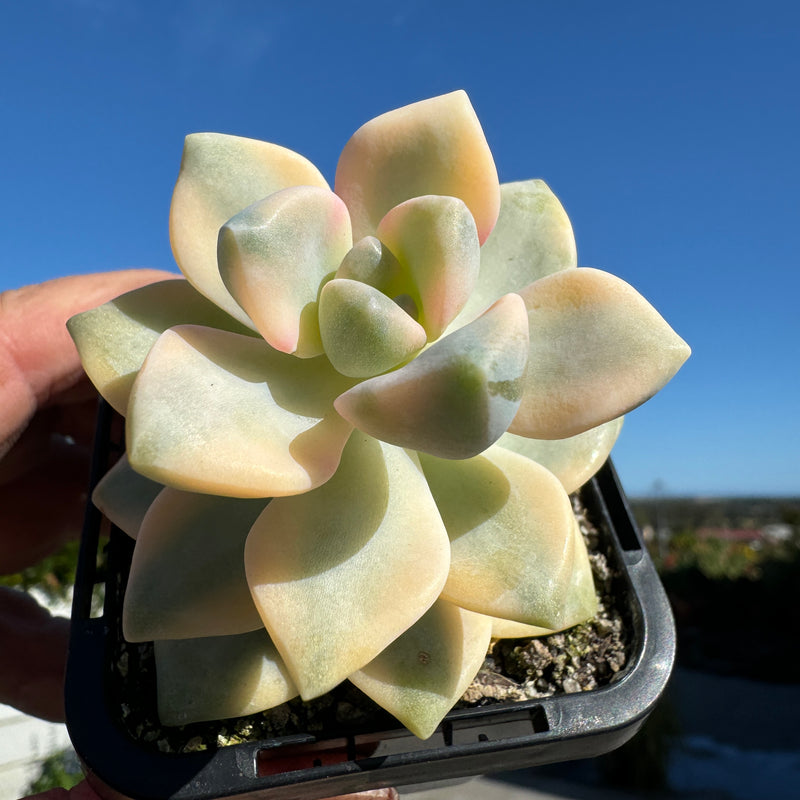SARRACENIA (PITCHER PLANT) Thanks to Trffid Park

Photograph International carnivorous Plant Society
These plants grow on the east coast of North America.
Their brightly colored pitchers attract flies, wasps, bees and other flying insects.
Crawling creatures such as ants and slaters climbs up the pitchers, attracted by the sweet smelling nectar, or by the smell of insects already rotting inside the pitchers.
The pitchers have downward pointing hairs to stop any insects crawling out.
They all flower in spring with the flowers varying in color from red, yellow, pink or green.
A mature plant can grow up to 60cm tall.
Most have hoods to stop the pitchers filling with rain water and washing the food away. Some varieties don’t have hoods and use the rain water to drown their prey.
REPOTTING:
You can use straight Sphagnum peat moss or a mixture of 75% Sphagnum peat moss and 25% propagating sand or perlite. Wet this mix thoroughly through first before potting your plant into it. The best time to re-pot is in the early spring when the plants are just starting to grow. Use a pot to suit the size of the plant, giving it enough room to grow for the following year, but not too big that it dwarfs the plant.
WATERING: See more watering info at bottom of page under "WATER".
Do not ever let your Sarracenia dry out. During Spring, Summer and Autumn sit it in a saucer of water, changing the water frequently. The water should cover the drainage holes of the pot. If your water is good enough to drink straight from the tap, then this is alright to use on your plant. If not you should use either rain, distilled or reverse osmosis water. In winter do not let the plant dry out but don’t leave it sitting in water all the time.
FERTILIZING: Do not fertilize with flies or insects. You will end up killing your plant this way. We feed with a mixture of Seasol and Powerfeed (Powerfeed is made by the same company as Seasol). To one litre of water, we use 4 ml of Seasol and 1 ml of Powerfeed. If Powerfeed isnt available, then we just use the Seasol at 4ml per 1 litre of water.
DO NOT use any other fertilisers. We use this mix every 6-8 weeks from Spring to Autumn either watered onto the growing medium, or poured into the water tray beneath the pot.
LIGHT: Sarracenia's require a high level of light. A window sill inside the house that gets morning sun in summer and afternoon sun in winter is an excellent position. Otherwise you can grow them in a terrarium, greenhouse, glasshouse or porch and some growers grow them outside in the full weather.
HUMIDITY: Sarracenia’s like a reasonable amount of humidity. A terrarium or glasshouse will provide this. But a warm sunny window sill will give you enough heat for the plant to survive. For sarracenias, heat doesn't seem to be a problem. Our growing houses reach 50 degrees celcius in summer. We don't put any cover over the plastic house, as the more light you can give the sarracenias, the better they are. But they must never dry out. Be very wary of high fertiliser concentrations when the temperatures get up this high.
DORMANCY: During winter your Sarracenia will go into their dormancy period. They will stop growing and all the traps will die off. Do not worry. This is a natural occurrence and the plant must go through this period in order to stay alive and gain strength to grow their spring traps and flowers. Cut off any dead leaves/pitchers at the base of the plant. In spring the plants will send up their new leaves/pitchers. For tropical countries where you don't get a cold winter, see the section at the bottom of this page on "Dormancy" for forcing dormancy.
FLOWERING: Sarracenia's will flower in early spring, if the plant is of flowering size. They put up their flowers first so that naturally in the wild, the insects will pollinate them. They they put up their traps to catch and eat the insects. To learn to pollinate sarracenias, we have some good books on the subject available for sale.


















































